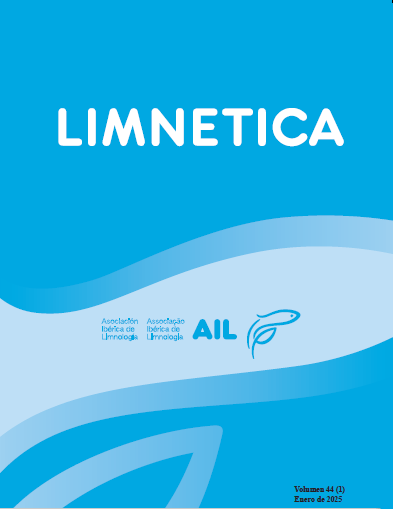An unpolluted regulated stream and its recovery gradient dependency from environmental variables
Unpolluted regulated stream and its recovery gradient dependency
Abstract
We studied the recovery gradient of a thermally altered regulated unpolluted piedmont stream and its dependency from the main environmental variables. Complex interactions between nutrients and the main physical parameters were identified as responsible of the observed trends. Thus, seasonal fluctuations of parameters such as dissolved oxygen and temperature in the hypolimnion of the upstream dam influenced the concentration of nitrogen compounds entering the stream from the hypolimnion to downstream sections, thus affecting invertebrate communities. Macroinvertebrate assemblages were studied in a 1.25 km river reach downstream from the dam during a 4-year period (2019-2022). Environmental parameters and nutrients were measured and hydrological alteration indices were calculated for the longitudinal gradient survey. The goal was to unravel the main environmental variables linked to the dam-induced hydro-morphological pressure affecting macroinvertebrate communities. Our analysis revealed natural-born hypolimnetic ammonia as the principal contributing physicochemical or hydrological parameter to community structure or biomonitoring metrics. Ammonia enters the river system mainly during the dam thermal stratification periods (spring-summer) and macroinvertebrate communities showed the highest recovery rates in the autumn, when the stream can achieve a good ecological status even as near as 25 m below the dam wall when ammonia concentrations are low.
##submission.downloads##
Pubblicato
Fascicolo
Sezione
Licenza
Los autores que publican en esta revista están de acuerdo con los siguientes términos:
- Limnetica está bajo una licencia de Creative Commons Atribución-NoComercial 4.0 Internacional.
b. Los autores pueden establecer por separado acuerdos adicionales para la distribución no exclusiva de la versión de la obra publicada en la revista (por ejemplo, situarlo en un repositorio institucional o publicarlo en un libro), con un reconocimiento de su publicación inicial en esta revista.
c. Se permite y se anima a los autores a difundir sus trabajos electrónicamente (por ejemplo, en repositorios institucionales o en su propio sitio web) antes y durante el proceso de envío, ya que puede dar lugar a intercambios productivos, así como a una citación más temprana y mayor de los trabajos publicados (Véase The Effect of Open Access) (en inglés).


